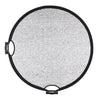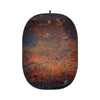True High-Speed Sync vs Long Tail High-Speed Sync
Flash lighting in photography is arguably the most versatile type of lighting that you can use in combination with your DSLR or Mirrorless camera to enable you to create amazing images, and add a level of production to your images which can take your photography to the next level…
Unfortunately, using flash with your camera does have its limitations. Your flash can only sync with your camera at shutter speeds below your camera’s “Sync Speed” (Maximum sync speeds vary from camera to camera, but is usually around the 1/200th or 1/250th of a second), which is usually fine when shooting indoors or in a studio, but if you are outdoors in the mid-day sun you may want to use a higher shutter-speed to kill the ambient light in the scene, and/or use a wide aperture for a nice shallow depth of field.
Luckily, photographers can get around this issue by using a flash which supports High-Speed Sync. HSS enables you to use your flash at shutter-speeds faster than your camera’s sync speed without having to worry about the black bar, however it does also have some drawbacks.
Why do we need High-Speed Sync?
The vast majority (if not all) DSLR and Mirrorless cameras use what is called a “Curtain Shutter” which works like a pair of curtains opening and closing across your camera’s imaging sensor. When you press the shutter button, the first curtain opens, and at the end of the exposure, the second curtain will follow and completely cover the imaging sensor. The flash fires as soon as the first curtain is fully open, and the sensor is fully exposed. This happens when you use shutter-speeds up to your camera’s Sync Speed.
When using a shutter-speed faster than your camera’s sync-speed however, the second curtain doesn’t have enough time to wait for the first curtain to fully open, so it starts to close before the first curtain is fully open, causing only a part of the sensor to be exposed at one time. Since the second curtain has already started to move across the sensor when the flash goes off, you would get a black bar across your image caused by the second curtain blocking part of the sensor (the faster your shutter speed, more of the sensor is obstructed by the second curtain).
True High-Speed Sync
There are two main types of High-Speed Sync: True High Speed Sync, and Long-Tail High Speed Sync. True High-Speed Sync works by rapidly pulsing the light from the flash (quicker than the eye can see) so that light gets to all parts of the sensor, which gives you nice even flash coverage across the entire sensor. However it does have a few drawbacks:
- Since the Light has to pulse, you lose a lot of flash output, meaning that you have to compensate by moving your flash closer to your subject.
- It also requires a fair amount of power to perform High-Speed sync, which drains your batteries quicker than normal.

Long Tail High-Speed Sync
Long-Tail High-Speed Sync (sometimes known as Hyper-Sync) uses the duration of the flash to expose the entire sensor, as opposed to pulsing the flash, which means that you won’t lose any flash power, and the battery doesn’t have to work any harder than it does normally, meaning you’ll get more time out of your battery. Just like True High-Speed Sync, Long-Tail High-Speed Sync also has its drawbacks:
- Since the duration of the flash needs to be long enough to cover the entire sensor whilst shutter is open, it will only work whilst using your flashes higher power settings (e.g. Full power, ½ Power etc).
- Depending on the ambient lighting conditions, sometimes there is a noticeable dark gradation on your image caused by the tail end of the flash.
PiXAPRO and Godox Flashes and Triggers with HSS
While we did previously stock a range of flashes and triggers that would be separately compatible with either True HSS or Long-Tail HSS, these have since all been discontinued! Now, all of the HSS-Compatible PiXAPRO and Godox flashes and triggers that we stock are True High Speed Sync only. Some of the post popular HSS-Compatible equipment we offer is:
We still offer a range of manual lighting equipment that don't have HSS features if you prefer these! Check the product description and specifications to see if it has the features you need, and make sure you're also purchasing a compatible flash trigger too! HSS will only work with triggers designed for your specific camera brand. Any universally compatible triggers will work with manual flashes only as otherwise they won't be able to communicate fully with your camera for HSS features.
Looking for some more help on which flash is best for you? Contact our support and advisor team via email at info@essentialphoto.co.uk and we'll be able to assist with some tailored advice!
Shop with confidence at EssentialPhoto & Video with 1 - 2 year warranty on flash lighting from PiXAPRO and Godox! Browse the full flash range now at www.essentialphoto.co.uk/collections/flash-lighting


































































































































































































































































































